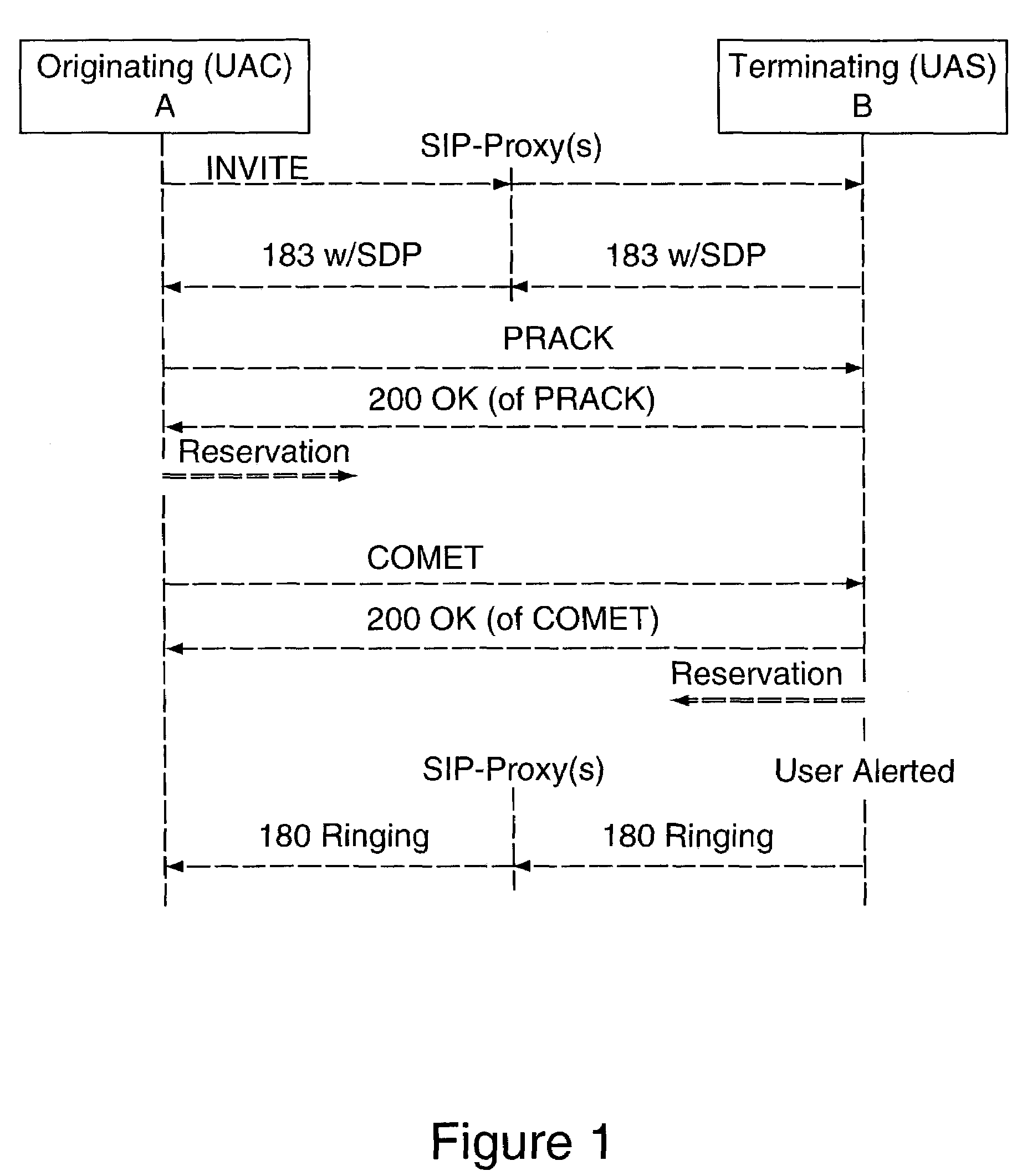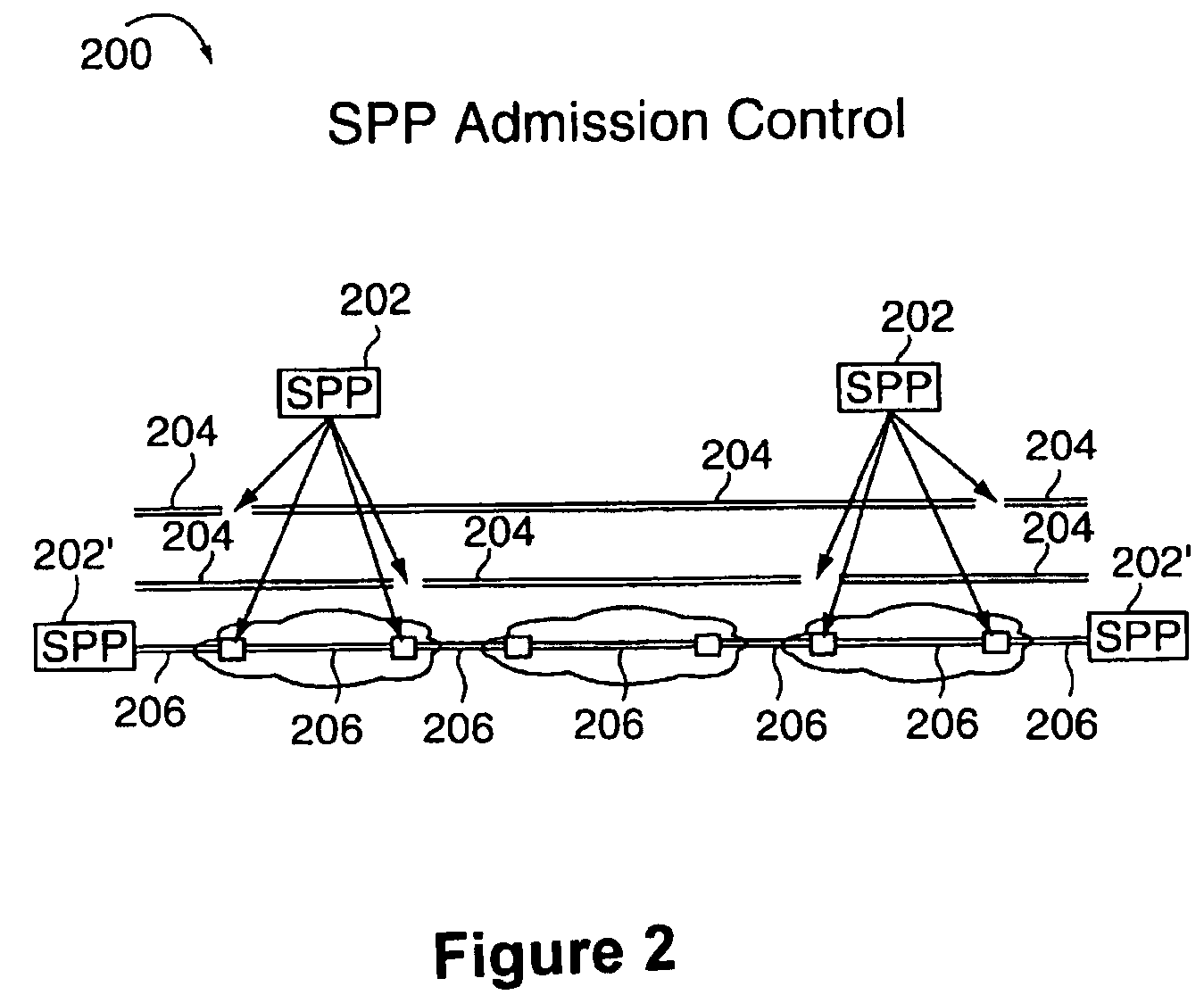Methods for enhancing SDP preconditions signalling for IP multimedia sessions
a multimedia session and preconditions technology, applied in the field of methods for enhancing sdp preconditions signalling for ip multimedia sessions, can solve the problems of inability to convey lead role information, unnecessary delays and/or additional messages, etc., and achieve the effect of reducing session establishment time and reducing the number of messages
- Summary
- Abstract
- Description
- Claims
- Application Information
AI Technical Summary
Benefits of technology
Problems solved by technology
Method used
Image
Examples
Embodiment Construction
[0025]The methods and apparatus of the present invention are directed to a number of procedures to enable the IP signaling layer (SIP / SDP or similar mechanisms) to perform a richer preconditions negotiation leading to faster, more efficient and more generally applicable session preconditions.
[0026]FIG. 2 shows a simplified exemplary system 200 which will be used to explain SDP Precondition Processor (SPP) based Admission Control with respect to various features of the present invention. The system 200 implemented in accordance with the invention includes an arbitrary number of SPPs 202 between, and including, at least two SPP end-points 202′. Each SPP 202 manages at least one virtual QoS trunk 204 for preconditions purposes. A virtual trunk 204 is a concatenation of links or physical trunks 206 over which there is a known resource allocated and into which session admission is generally undertaken by a single authoritative SPP 202 as shown in FIG. 2. This is so that the SPP 202 is aw...
PUM
 Login to View More
Login to View More Abstract
Description
Claims
Application Information
 Login to View More
Login to View More - R&D
- Intellectual Property
- Life Sciences
- Materials
- Tech Scout
- Unparalleled Data Quality
- Higher Quality Content
- 60% Fewer Hallucinations
Browse by: Latest US Patents, China's latest patents, Technical Efficacy Thesaurus, Application Domain, Technology Topic, Popular Technical Reports.
© 2025 PatSnap. All rights reserved.Legal|Privacy policy|Modern Slavery Act Transparency Statement|Sitemap|About US| Contact US: help@patsnap.com



